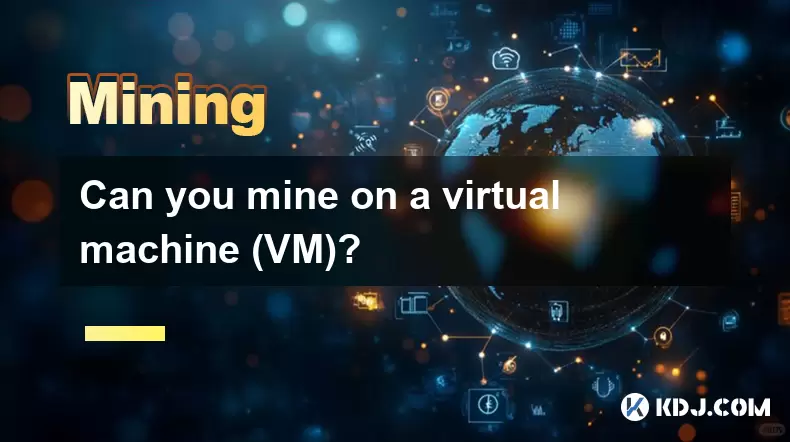-
 Bitcoin
Bitcoin $118,209.3536
1.16% -
 Ethereum
Ethereum $3,151.7546
5.98% -
 XRP
XRP $2.9277
2.35% -
 Tether USDt
Tether USDt $1.0000
0.00% -
 BNB
BNB $689.7099
1.26% -
 Solana
Solana $163.4270
1.91% -
 USDC
USDC $1.0000
0.02% -
 Dogecoin
Dogecoin $0.1983
3.74% -
 TRON
TRON $0.3008
0.51% -
 Cardano
Cardano $0.7435
2.86% -
 Hyperliquid
Hyperliquid $47.6547
-0.48% -
 Stellar
Stellar $0.4625
2.79% -
 Sui
Sui $3.9921
2.71% -
 Chainlink
Chainlink $16.0608
4.23% -
 Hedera
Hedera $0.2348
1.56% -
 Bitcoin Cash
Bitcoin Cash $496.6985
1.25% -
 Avalanche
Avalanche $21.9038
5.41% -
 UNUS SED LEO
UNUS SED LEO $8.8356
-1.88% -
 Shiba Inu
Shiba Inu $0.0...01364
5.31% -
 Toncoin
Toncoin $3.1102
4.35% -
 Litecoin
Litecoin $95.9756
3.59% -
 Polkadot
Polkadot $4.0925
5.78% -
 Monero
Monero $333.7622
-1.44% -
 Uniswap
Uniswap $9.1968
2.25% -
 Bitget Token
Bitget Token $4.6378
6.23% -
 Pepe
Pepe $0.0...01282
6.77% -
 Dai
Dai $1.0002
0.03% -
 Ethena USDe
Ethena USDe $1.0005
0.00% -
 Aave
Aave $329.9143
4.49% -
 Bittensor
Bittensor $441.4995
6.89%
Can you mine on a virtual machine (VM)?
Mining on a virtual machine is possible but inefficient due to hardware access limitations and reduced performance compared to physical rigs.
Jul 16, 2025 at 12:56 pm

Understanding the Basics of Mining on a Virtual Machine
Mining cryptocurrency typically involves using specialized hardware to solve complex mathematical problems and validate transactions. Traditional mining setups involve physical machines equipped with high-performance GPUs or ASICs. However, some users consider using a virtual machine (VM) as an alternative for testing or lightweight mining tasks. A VM is essentially a software-based emulation of a computer system that runs within another operating system.
While it’s technically possible to mine on a virtual machine, there are significant limitations. The performance bottleneck comes from the fact that VMs don’t have direct access to hardware resources like GPUs or CPUs in the same way physical machines do. This limitation can drastically reduce mining efficiency and hash rate.
Setting Up a Virtual Machine for Mining Purposes
If you're determined to proceed with mining on a VM, you'll need to configure the environment carefully. Start by choosing a reliable hypervisor, such as VMware, VirtualBox, or Hyper-V. These platforms allow you to create and manage virtual machines effectively.
Next, install a lightweight Linux distribution inside your VM. Many miners prefer Ubuntu or Debian due to their compatibility with mining software and ease of configuration. Once the OS is installed, you’ll need to allocate sufficient RAM and CPU cores to the VM while ensuring the host machine remains stable.
- Install necessary dependencies like build-essential, libcurl4-openssl-dev, and git
- Download or compile your preferred mining software, such as CGMiner or XMRig
- Configure network settings to allow outbound connections to mining pools
GPU Passthrough: Is It Possible?
One of the biggest challenges in mining via a VM is accessing GPU power. Normally, VMs cannot directly utilize GPUs unless PCIe passthrough is configured. This advanced feature allows a guest VM to access a physical GPU directly, bypassing the usual virtualization overhead.
To enable GPU passthrough:
- Ensure your CPU supports IOMMU/VT-d technology
- Enable IOMMU in BIOS/UEFI settings
- Configure your hypervisor to assign the GPU device to the VM
- Install appropriate GPU drivers inside the VM
This process is complex and not recommended for beginners. Additionally, most consumer-grade systems may not support full GPU passthrough reliably, which limits its practicality for mining purposes.
Mining Software Compatibility and Configuration
Once your VM is set up and has access to necessary hardware, the next step is configuring mining software. For CPU mining, tools like XMRig are popular choices. For GPU mining, you might use Claymore’s Dual Miner or PhoenixMiner, but only if your VM can access the GPU through passthrough.
Configuration steps generally include:
- Creating a configuration file or editing existing ones
- Specifying the mining pool address and port
- Entering your wallet address and worker name
- Adjusting intensity, thread count, and other performance-related parameters
It's important to note that software compatibility can vary depending on the virtualized environment. Some mining applications may fail to detect GPUs or crash unexpectedly when running inside a VM without proper setup.
Performance Considerations and Limitations
Even if you successfully set up mining on a VM, performance will likely be suboptimal compared to physical mining rigs. The overhead introduced by virtualization means that CPU cycles and memory bandwidth are shared between the host and guest systems. This sharing reduces the available computing power for mining.
Additionally, network latency and disk I/O speed can impact mining stability and profitability. In Proof-of-Work systems where timing and responsiveness matter, even small delays can result in rejected shares or lower rewards.
Also, cloud-based VMs (such as those offered by AWS or Azure) often have anti-mining policies enforced at the infrastructure level. Attempting to mine on these platforms may result in account suspension or additional charges.
Security Risks and Ethical Concerns
Running mining operations on a virtual machine—especially one hosted in a public cloud—can raise ethical and legal concerns. Unauthorized mining, sometimes referred to as cryptojacking, is illegal and unethical. Always ensure you have explicit permission to mine on any system you're using.
From a security standpoint, VMs are not immune to attacks. Running mining software increases the attack surface of your virtual machine. If compromised, attackers could gain access to both the VM and potentially the host system.
Always implement strong firewall rules, disable unnecessary services, and keep your mining software updated to mitigate risks.
Frequently Asked Questions
Q: Can I mine Ethereum on a virtual machine?
A: Technically yes, but only if you’ve configured GPU passthrough and are using compatible mining software. Due to performance limitations, mining Ethereum on a VM is generally inefficient and not cost-effective.
Q: Will mining on a VM damage my hardware?
A: Mining itself doesn't damage hardware unless done under poor cooling conditions or overclocked aggressively. Since VMs abstract hardware usage, they typically impose less stress than native mining, though resource over-allocation can still cause instability.
Q: Is mining on a VM profitable?
A: In most cases, mining on a VM is not profitable due to reduced performance, lack of direct GPU access, and potential restrictions imposed by cloud providers. It's best suited for educational or testing purposes rather than real-world mining operations.
Q: What cryptocurrencies can I mine on a VM?
A: You can mine any cryptocurrency that uses a CPU-mineable algorithm, such as Monero (XMR), provided your VM has enough processing power. Profitability will depend on your VM’s allocated resources and current market conditions.
Disclaimer:info@kdj.com
The information provided is not trading advice. kdj.com does not assume any responsibility for any investments made based on the information provided in this article. Cryptocurrencies are highly volatile and it is highly recommended that you invest with caution after thorough research!
If you believe that the content used on this website infringes your copyright, please contact us immediately (info@kdj.com) and we will delete it promptly.
- Crypto ROI Revolution: Is BFX the Next Big Thing?
- 2025-07-16 21:30:13
- Dogecoin, HBAR, and Partnerships: A Tale of Memes vs. Utility
- 2025-07-16 21:30:13
- Cha-Ching! That £2 Coin Could Be Worth a Mint!
- 2025-07-16 22:10:12
- Meme Coin Mania Meets Crypto Payroll & Burger Bites: A New York Minute on the Latest Trends
- 2025-07-16 22:10:13
- China Gold Market: Investment and Focus in 2025
- 2025-07-16 22:15:13
- FxWirePro: Token Unlock Tsunami – Navigating the ARBUSD Waters
- 2025-07-16 22:15:13
Related knowledge

How are crypto mining profits taxed?
Jul 14,2025 at 12:28am
Understanding Cryptocurrency Mining and TaxationCryptocurrency mining involves validating transactions on a blockchain network and earning rewards in ...

How to keep a mining rig cool
Jul 12,2025 at 01:42pm
Understanding the Importance of Cooling in Mining RigsCryptocurrency mining is an intensive process that places heavy demand on hardware components, p...

How to mine crypto on a gaming PC
Jul 16,2025 at 12:00pm
What is Crypto Mining on a Gaming PC?Crypto mining involves using your computer's processing power to validate transactions on a blockchain network. A...

How to set up a crypto miner
Jul 16,2025 at 09:14am
Understanding Ethereum Gas Fees: What Are They and How Do They Work?Ethereum gas fees are a fundamental aspect of the network, representing the cost r...

Can you mine crypto on a laptop?
Jul 16,2025 at 02:21am
Is It Feasible to Mine Cryptocurrency on a Laptop?Mining cryptocurrency on a laptop is technically possible, but feasibility depends heavily on the ha...

Is crypto mining worth it?
Jul 16,2025 at 01:21am
Understanding the Basics of Crypto MiningCrypto mining refers to the process of validating transactions on a blockchain network by solving complex mat...

How are crypto mining profits taxed?
Jul 14,2025 at 12:28am
Understanding Cryptocurrency Mining and TaxationCryptocurrency mining involves validating transactions on a blockchain network and earning rewards in ...

How to keep a mining rig cool
Jul 12,2025 at 01:42pm
Understanding the Importance of Cooling in Mining RigsCryptocurrency mining is an intensive process that places heavy demand on hardware components, p...

How to mine crypto on a gaming PC
Jul 16,2025 at 12:00pm
What is Crypto Mining on a Gaming PC?Crypto mining involves using your computer's processing power to validate transactions on a blockchain network. A...

How to set up a crypto miner
Jul 16,2025 at 09:14am
Understanding Ethereum Gas Fees: What Are They and How Do They Work?Ethereum gas fees are a fundamental aspect of the network, representing the cost r...

Can you mine crypto on a laptop?
Jul 16,2025 at 02:21am
Is It Feasible to Mine Cryptocurrency on a Laptop?Mining cryptocurrency on a laptop is technically possible, but feasibility depends heavily on the ha...

Is crypto mining worth it?
Jul 16,2025 at 01:21am
Understanding the Basics of Crypto MiningCrypto mining refers to the process of validating transactions on a blockchain network by solving complex mat...
See all articles

























































































